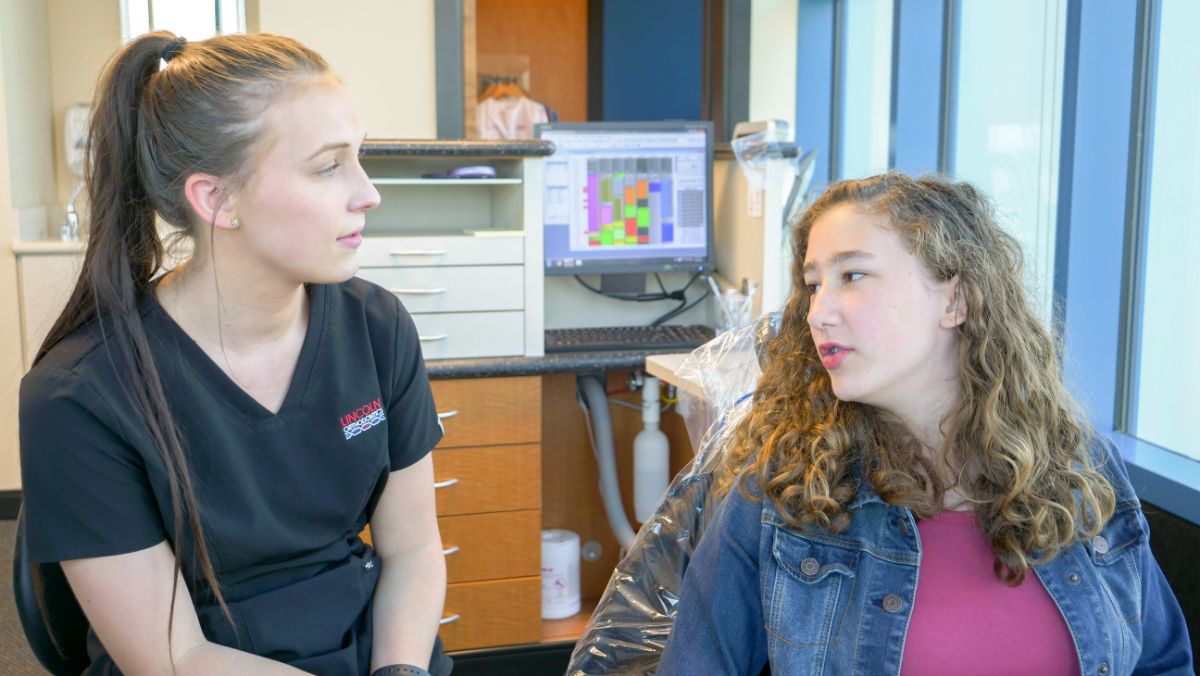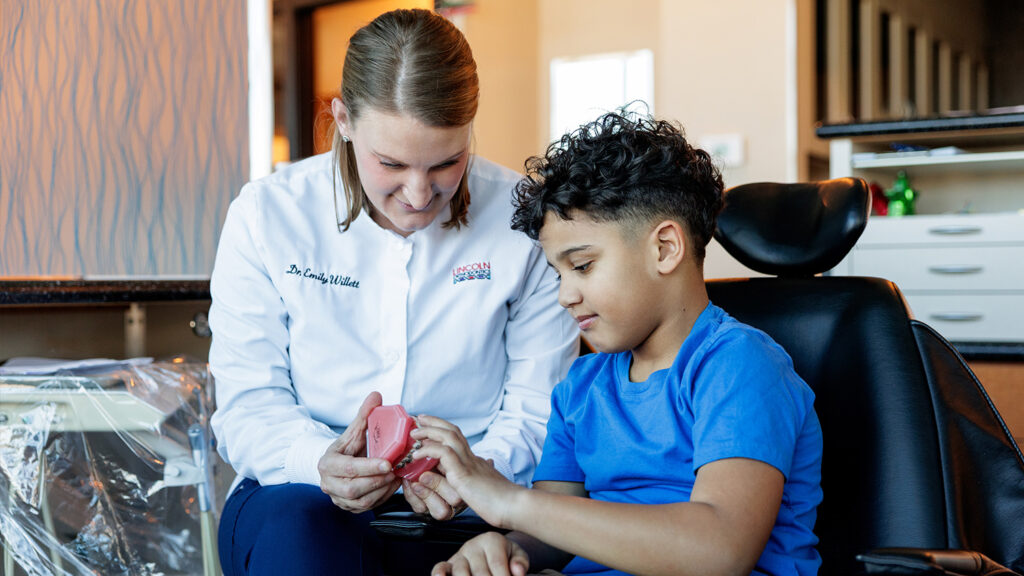Why Your Child Should See An Orthodontist By Age 7
- December 22, 2021

Here at Lincoln Orthodontics, our team has been creating beautiful smiles for patients of all ages at our welcoming Lincoln office for years. We treat teens and a growing number of adult patients, but we also treat younger children! Because of this, we frequently hear from parents who want to know when they should bring their child in for their first visit with us. Our answer is based on a recommendation from the American Association of Orthodontists that all children have an orthodontic evaluation by the age of seven, or corresponding to the eruption of some permanent teeth and when issues can be identified and easily addressed. Since kids this age tend to have developing mouths with several baby teeth left, this can surprise some parents. But that’s exactly why these initial visits are so important!
Early childhood evaluations are a valuable tool because they allow us to identify any potential issues present that could cause more serious problems in the future. Experienced orthodontists like Dr. Emily Willett use the dental landmarks that young children have to identify the way their bite is likely to develop as they get older. They are then able to create a customized plan for the right treatment at the most optimal time, giving a child the best chance for a lifetime of healthy smiles! Keep reading to learn more about what you can expect from your child’s first orthodontic evaluation.
What happens during an early orthodontic evaluation?
If you’re bringing your child in for their first orthodontic visit, it helps to know what to expect! Our main focus during this evaluation is assessing their oral health and development. Dr. Willett will also keep an eye out for any problems that could signal treatment is warranted, whether now or in the future. Diagnosing these issues early on gives us the opportunity to correct them before they become more significant, and there are several common ones we’ll be looking out for. These include:
Misalignment
Crooked teeth can impact the cosmetic appearance of a child’s smile and they’re also harder to clean. They’re more susceptible to uneven wear and tear as well. If these issues are left untreated over time, they can eventually affect both the shape and position of the surrounding gum tissue.
Tooth loss
Even though children lose their baby teeth, they’re still the placeholders for our permanent teeth. As such, they matter more than you might imagine. They also tend to fall out in a pretty specific order. If Dr. Willett notices any significant deviation from this pattern, it may signal a developmental issue that requires further attention.
Spacing issues
These problems can occur when a tooth is lost prematurely, where one has never developed, or if a child has teeth that are too small or spaced too far apart.
Tooth eruption
Most children will have at least four permanent molars and up to four permanent incisors around the age of seven. Any more or less than this could indicate a potential problem with missing, crowding, or extra teeth.
Front teeth that noticeably protrude are often seen as primarily a cosmetic concern, but they can also increase the risk of potential injury to the permanent teeth and affect a child’s speech.
Underbites can be caused by problems with either the teeth or jaws. This usually involves the lower jaw growing too far forward, or the upper jaw growing deficiently.
Posterior Crossbite
A posterior crossbite can cause crowding and may cause the jaw to shift from one side to the other so the top and bottom teeth can fit together. A narrow upper jaw can also be associated with a narrow nasal passage.
Anterior Open Bites and Deep Bites
These bite problems occur vertically. In bites that are too deep, the top teeth completely cover the bottom ones when biting, which can indicate a small lower jaw. With an open bite, the overall bite doesn’t overlap enough.

What happens after a child’s first orthodontic evaluation?
An orthodontic evaluation with Lincoln Orthodontics doesn’t always lead to an immediate recommendation for treatment. In fact, this happens in only a small percentage of cases involving young children. We love these visits because they allow us to approach a child’s orthodontic care proactively instead of simply reacting. That means we can provide them with the specific care and treatment they need when they need it the most.
We sometimes refer to this approach as interceptive orthodontics or Phase I treatment. Generally, we will recommend interceptive orthodontics to achieve the kind of results we may not be able to obtain once a child’s face and jaw have stopped growing. Phase I treatment encourage proper jaw development, which helps :
- to better accommodate the permanent teeth when they come in
- to improve how the upper and lower jaws fit together
- to reduce the risk of damage due to untreated issues
During Phase I treatment, Dr. Willett will often use fixed or removable orthodontic appliances, with one or both jaws, for a specific period of time. Doing this earlier in a child’s life helps to correct poor jaw growth, creates space for developing teeth, and allows the facial muscles to develop more normally.
After this initial phase of treatment is complete, the appliance will be removed and we’ll begin a period of observation. During this time, our doctors will monitor their mouth every 4-6 months or so to keep an eye on how things are developing. The child may also be given a retainer in order to keep their teeth stable.
Most Phase I patients will eventually need Phase II treatment to continue the stabilizing process. We will normally use braces or aligners to accomplish this and move the teeth into their final positions. This completes the bite correction process, leaving the patient with a beautifully aligned smile that is also fully functional.

Give your child’s smile the best start with Lincoln Orthodontics
Scheduling an early orthodontic evaluation with Dr. Willett for your child is one of the best things you can do for their smile! If there’s no indication that immediate treatment is necessary, we’ll invite you to continue visiting our Lincoln office every 6-12 months so our team can monitor their smile as they grow. This allows us to catch and treat any emerging issues early on. These recall visits are always free of charge.
If your young child is ready for their first orthodontic visit, we’d love to meet you both and take a look at how their smile is developing. Get in touch today to schedule their FREE evaluation!


